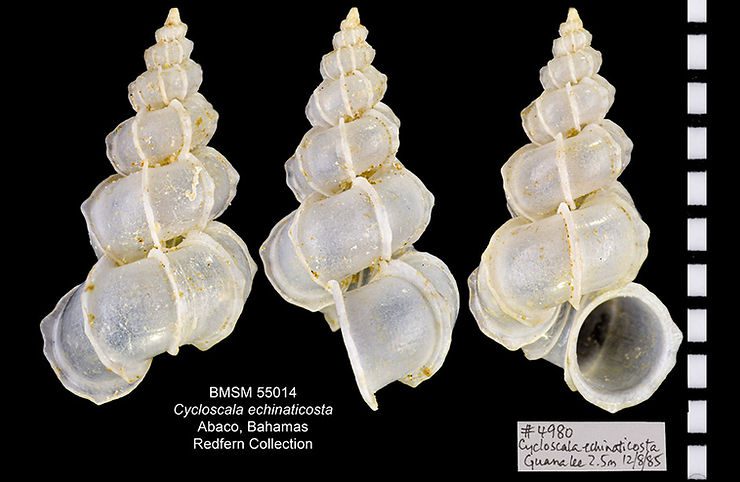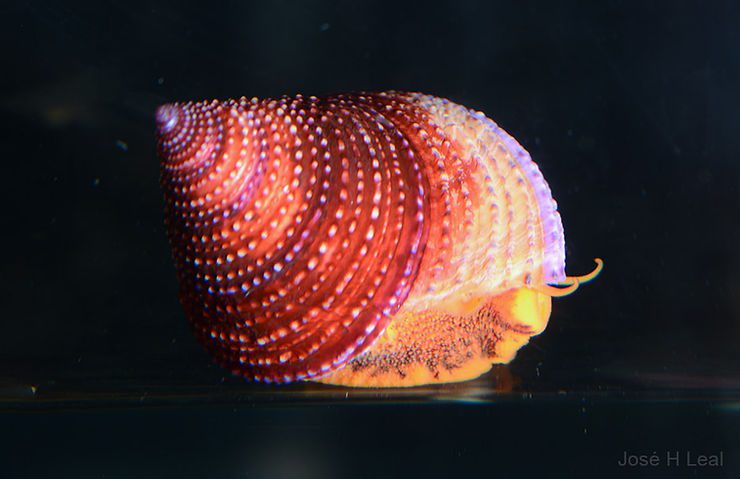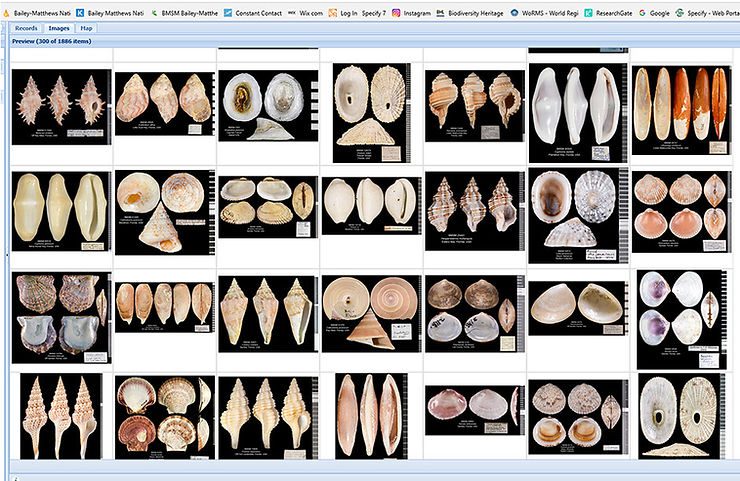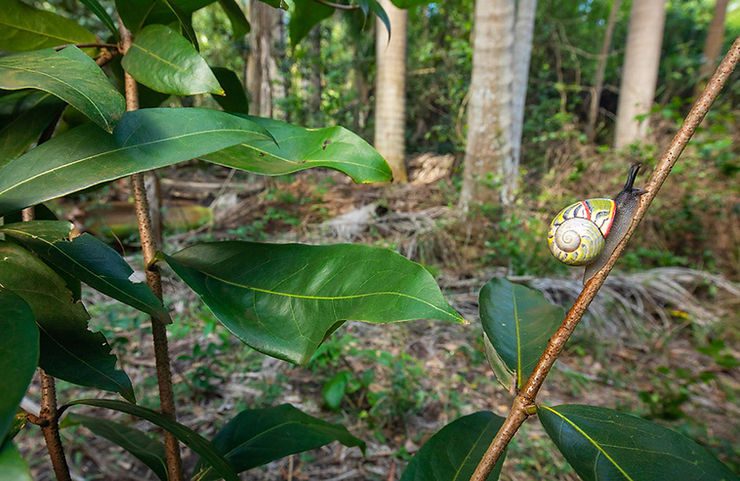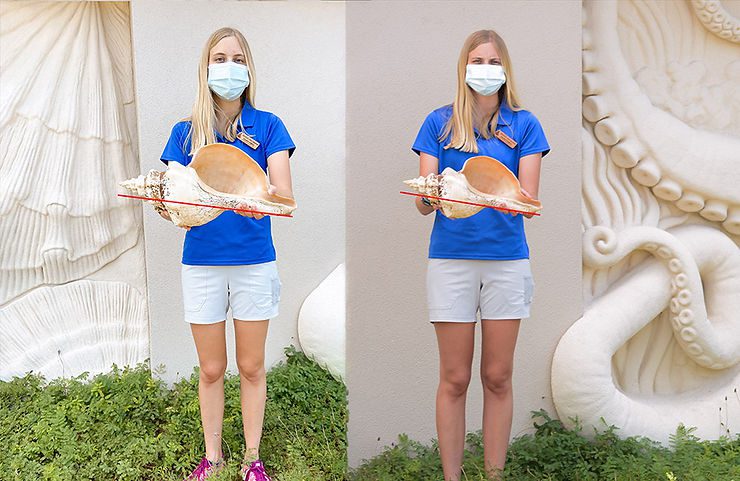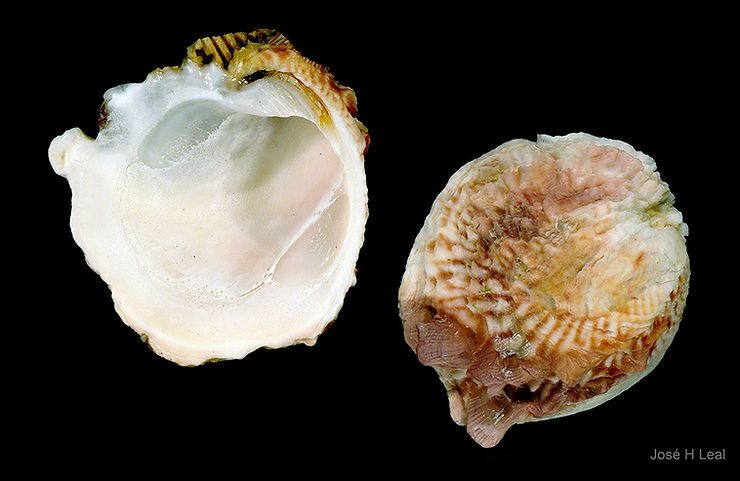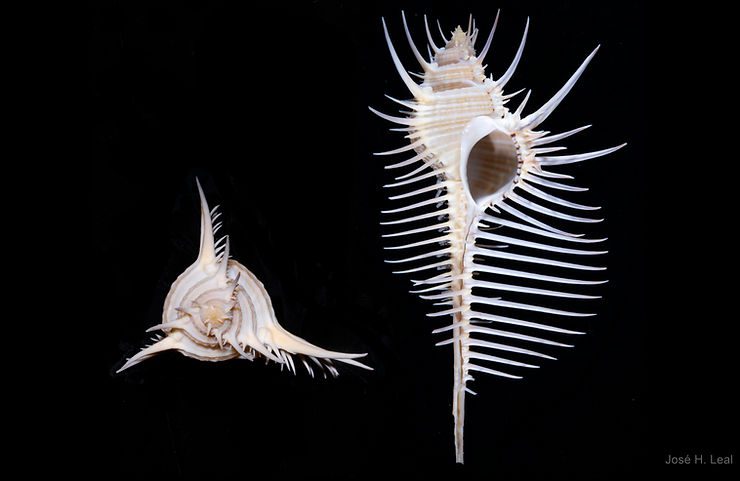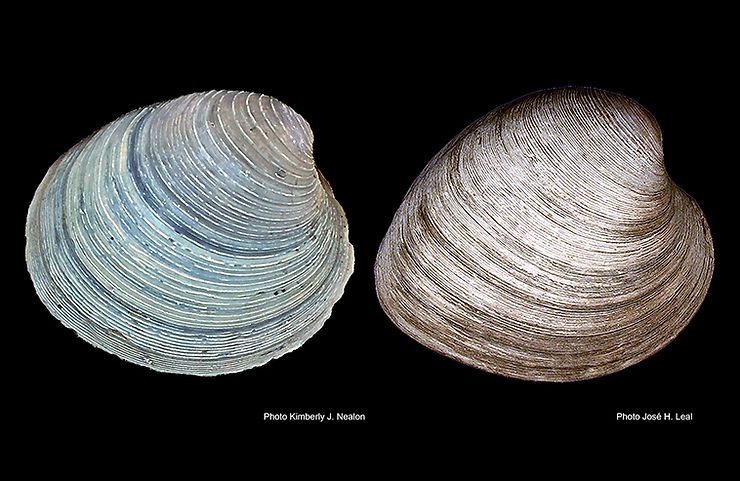
Nature’s Iron-based Shell Dye
Did you ever wonder why some shells on the beach are abnormally dark-gray, bluish, or almost black? They are not dark to begin with: The right valve of a Southern Quahog, Mercenaria campechiensis, on left, acquired its dark, bluish hues after being buried in sand or mud for some time (compare to “normal” color valve on right.) In sand or mud with levels of oxygen below normal (hypoxia) or where oxygen is completely lacking (anoxia), trace amounts of iron in the shell will combine with sulfur to
